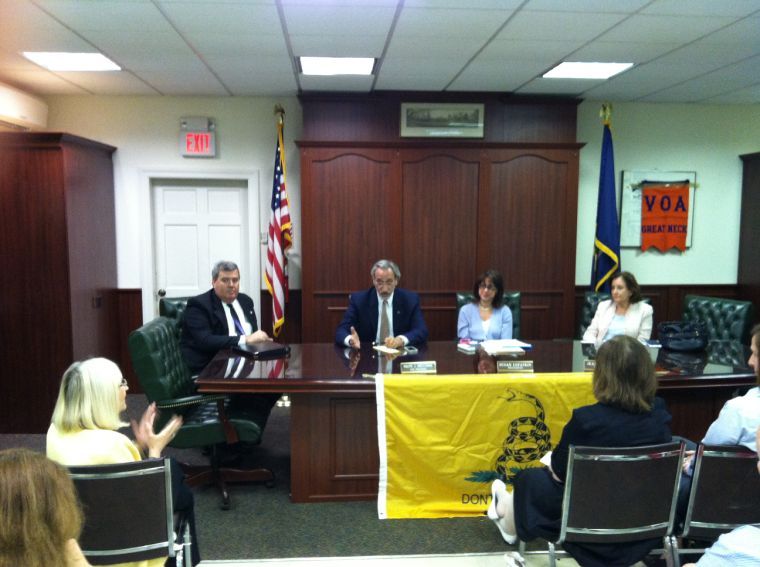
Out of the 3.3 million Cablevision customers about 2 million were without service in the aftermath of Superstorm Sandy, Jeff Clark, the director of government affairs with Cablevision, told the Great Neck Village Officials Association at a meeting last week.
Clark said Cablevision relies on LIPA to provide their equipment with power, so most of the service losses were due to power outages.
“Once power came back on, generally our service came back on,” said Clark, at the May 29 meeting.
But there were instances where customers had power and no cable.
Clark said the line providing power to Cablevision’s system could be down while the line providing power to someone’s house is still running. Conversely, if the customer doesn’t have power but cable service is intact, they can use a generator to power their modem and use their TV, phone or Internet.
In most cases, where there was no power to the home or Cablevision’s system, customers could still get limited access because Cablevision’s poles have backup battery packs that last up to 12 hours, according to Clark.
“Myself in Mineola, I had no power but I was still getting my cable TV service. I had my generator and the system was operating on battery for 12 hours, when those 12 hours lapsed, I lost my cable TV,” said Clark.
Great Neck Plaza Trustee Pam Marksheid asked if Cablevision was looking into improving the battery life of the backup systems.
Clark said he hadn’t heard anything but would find out if any work was being done.
Village of Great Neck Plaza Mayor Jean Celender asked Clark how they became aware of where the outages were. Clark said that they knew there were breaks in some areas even before customers were calling them. He said that once an area came up the system was able to isolate individual homes, because each cable box identifies with a house.
“If that box wasn’t responding, we knew we had a broken line,” said Clark.
Cablevision would then send out workers to different locations to “babysit” generators and provide power for a few hours before having to move to another location or refuel.
“If there was a community that had power but our system wasn’t being fed, we would send guys out with generators and they would hook up a generator to where the battery supply system had drained and repower the system so at least people could get some communication,” Clark said.
Clark said that fuel was a large issue for Cablevision, as it was for nearly everyone affected by the storm. He said that one worker came up with the idea to give out generators to gas stations in exchange for fueling up Cablevision’s trucks.
“We did okay but there are some changes that we can do with staffing, fuel supplies, generators,” said Clark. He said that for future storms Cablevision is working on improving the staff rotation and having the maximum number of people working at all times.
“There were 4,600 Cablevision employees and contractors working around the clock,” said Clark. He said that around 2,000 people were in call centers and the rest were out in the field.
Village of Kensington Mayor Susan Lopatkin, who is president of the Great Neck Village Officials Association, praised Cablevision’s service.
“Cablevision is doing the best they can. I appreciate their efforts, especially for the wi-fi aspects,” said Lopatkin.
Cablevision provides over 80,000 Optimum wi-fi hot spots in the tri-state area.
“People were able to go online, get information and communicate with someone. Wi-fi was a lifesaver for a lot of people” Clark said.






